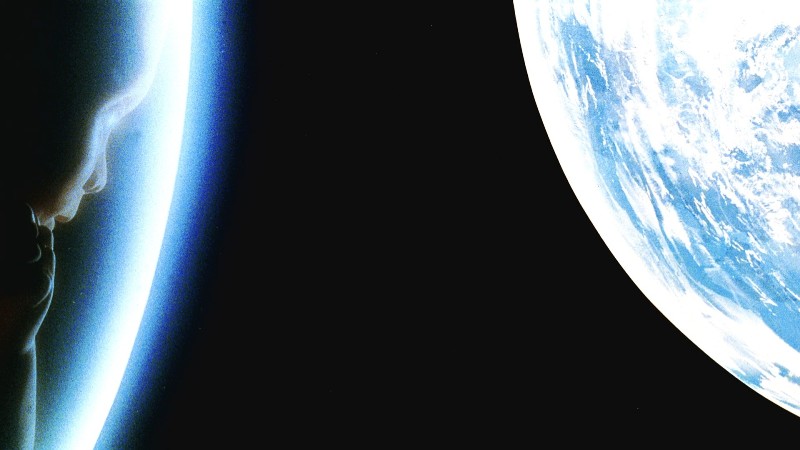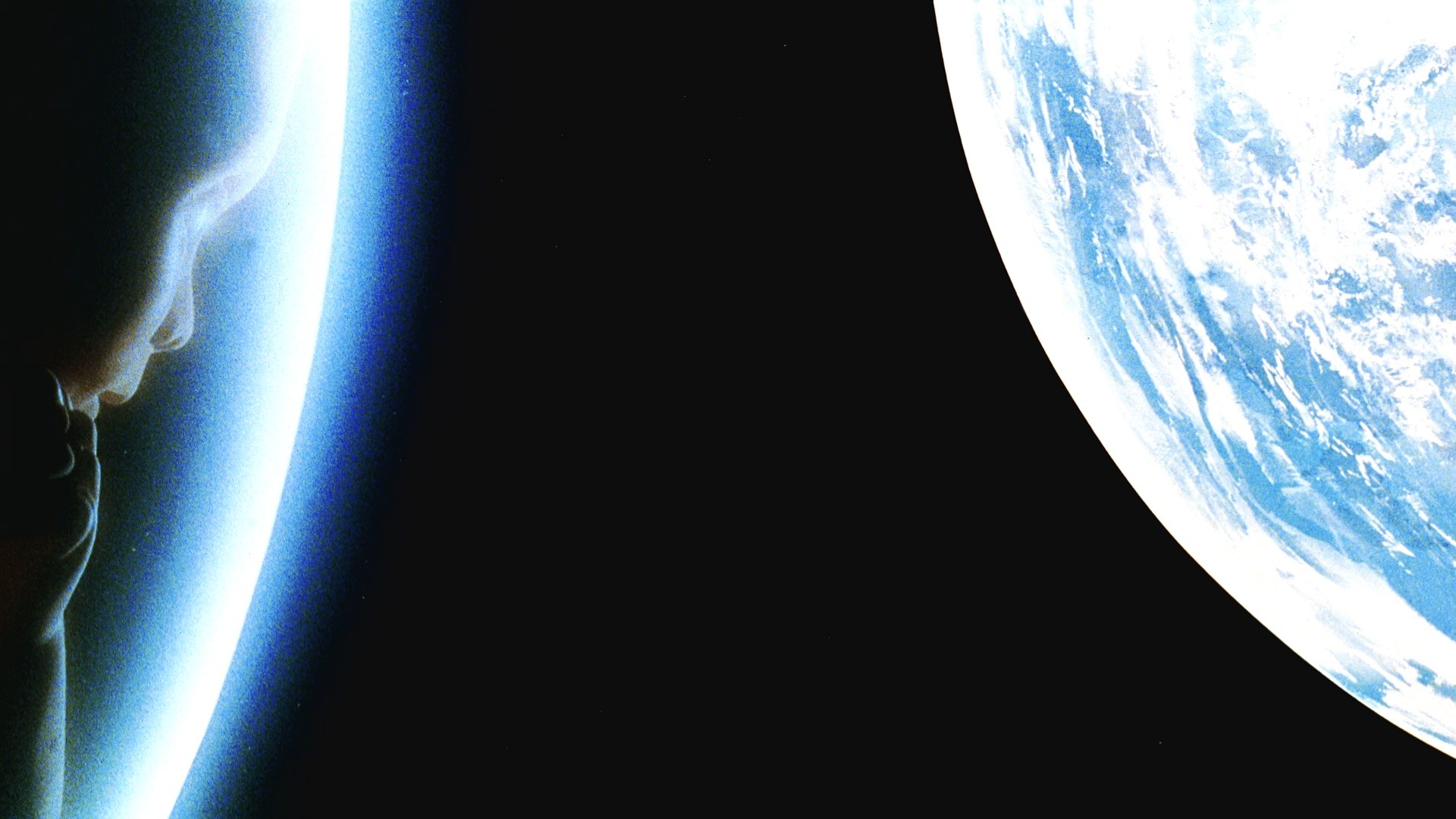File:Trumbull vfx master.jpg: Difference between revisions
Siterunner (talk | contribs) No edit summary |
Siterunner (talk | contribs) No edit summary |
||
| (2 intermediate revisions by the same user not shown) | |||
| Line 1: | Line 1: | ||
<addthis /> | <addthis /> | ||
'''''"Star Child"''' from '''2001: the Movie''''': | '''''"Star Child"''' from '''2001: the Movie''''': | ||
The ten seconds of the shot were actually made with eight hours of exposure: to achieve the effect of large depth of field and sharpness of the image the scene was filmed in stop-motion , three frames per second. The glowing effect was | The ten seconds of the shot were actually made with eight hours of exposure: to achieve the effect of large depth of field and sharpness of the image the scene was filmed in stop-motion , three frames per second. The glowing effect was obtained because of the long exposure time of each frame, so that the backlight seemed to penetrate into the sculpture (by Liz Moore). | ||
○ | ○ | ||
| Line 16: | Line 17: | ||
○ | ○ | ||
[http://www.planetcitizen.org '''Planet Citizen'''], [ | [http://www.planetcitizen.org '''Planet Citizen'''], [http://www.greenpolicy360.net/w/File:2001_pic3.jpeg '''Forward-looking Vision'''] | ||
A recollection from your GreenPolicy Siterunner after hearing Douglas Trumbull's thoughts on the [http://www.greenpolicy360.net/w/Overview_Effect "Overview Effect"], a quote from Stanley Kubrick: | A recollection from your GreenPolicy Siterunner after hearing Douglas Trumbull's thoughts on the [http://www.greenpolicy360.net/w/Overview_Effect "Overview Effect"], a quote from Stanley Kubrick: | ||
Latest revision as of 13:31, 12 February 2017
<addthis />
"Star Child" from 2001: the Movie:
The ten seconds of the shot were actually made with eight hours of exposure: to achieve the effect of large depth of field and sharpness of the image the scene was filmed in stop-motion , three frames per second. The glowing effect was obtained because of the long exposure time of each frame, so that the backlight seemed to penetrate into the sculpture (by Liz Moore).
○
Douglas Trumbull recalls the making of the Star Child sequence...
"(We) shot through about fifteen layers of a special gauze, with about 40,000 watts of backlight - something like 4 big arc lights to rim-light it, and got this tremendous, overexposed glowing effect. This particular gauze - actually very rare, lady stockings from pre-war Europe - created a beautiful softening of the light, without making it unsharp. If you use a fog filter it makes the image unsharp because it's actually a piece of glass with diffusion on it. But with gauze, part of the camera lens is seeing right through it, without interruption, so it tends to scatter the light without really stopping it from being sharp. Stanley filmed a number of different moves on the Starchild - shots of it entering frame and sliding through frame and so on. Then I airbrushed the envelope that surrounded it onto a piece of glossy black paper, which was photographed on the animation stand and matched in movement to the model, also with a lot of gauze and overexposure."
○
Planet Citizen, Forward-looking Vision
A recollection from your GreenPolicy Siterunner after hearing Douglas Trumbull's thoughts on the "Overview Effect", a quote from Stanley Kubrick:
... "There are approximately 100 billion stars in our galaxy alone, that each star is a life-giving sun and that there are approximately 100 billion galaxies in just the visible universe. Given a planet in a stable orbit, not too hot and not too cold, and given a few billion years of chance chemical reactions created by the interaction of a sun's energy on the planet's chemicals, it's fairly certain that life in one form or another will eventually emerge."
"It's reasonable to assume that there must be, in fact, countless billions of such planets where biological life has arisen, and the odds of some proportion of such life developing intelligence are high. Now, the sun is by no means an old star, and its planets are mere children in cosmic age, so it seems likely that there are billions of planets in the universe not only where intelligent life is on a lower scale than man but other billions where it is approximately equal and others still where it is hundreds of thousands of millions of years in advance of us. When you think of the giant technological strides that humankind has made in a few millennia—less than a microsecond in the chronology of the universe—can you imagine the evolutionary development that much older life forms have taken? They may have progressed from biological species, which are fragile shells for the mind at best, into immortal machine entities—and then, over innumerable eons, they could emerge from the chrysalis of matter transformed into beings of pure energy and spirit. Their potentialities would be limitless and their intelligence ungraspable by humans."
○
Our Place in the Universe, of the Universe
- The thought of our place in the universe as 'Star Children', as the film 2001 so beautifully captured as a Star Child gazed at our Home Planet Earth, is reminiscent of Carl Sagan's reminder "We are all stardust" and Joni Mitchell's lyric 'We are stardust, We are golden, And we've got to get ourselves, Back to the garden."
- Out of a supernova, as physicists explain, elements of the universe are produced. Our composition is of the stars, of the universe.
- We come from a high energy environment, scattered stardust and stardust that formed and created the garden of the Earth.
File history
Click on a date/time to view the file as it appeared at that time.
| Date/Time | Thumbnail | Dimensions | User | Comment | |
|---|---|---|---|---|---|
| current | 15:50, 29 May 2015 |  | 575 × 323 (19 KB) | Siterunner (talk | contribs) | Category:Green Graphics |
You cannot overwrite this file.
File usage
The following 3 pages use this file:

